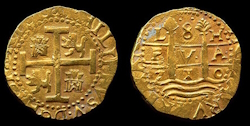 On 31st July 1715 a Spanish treasure fleet sank during a hurricane off the east coast of Florida. It was a catastrophe for the Spanish Crown, which was heavily relying on its cargo. The galleons were fully loaded with precious cargoes of gold, silver, jewellery, tobacco, spices, indigo, cochineal etc. The Spanish government was relying its the safe arrival, as the War of Spanish Succession, which had hindered the sailing of the treasure fleets, had just come to an end. For obvious reasons, this disaster awoke the interest of pirates, privateers, and honest seamen alike.
On 31st July 1715 a Spanish treasure fleet sank during a hurricane off the east coast of Florida. It was a catastrophe for the Spanish Crown, which was heavily relying on its cargo. The galleons were fully loaded with precious cargoes of gold, silver, jewellery, tobacco, spices, indigo, cochineal etc. The Spanish government was relying its the safe arrival, as the War of Spanish Succession, which had hindered the sailing of the treasure fleets, had just come to an end. For obvious reasons, this disaster awoke the interest of pirates, privateers, and honest seamen alike.
The Spanish treasure fleets
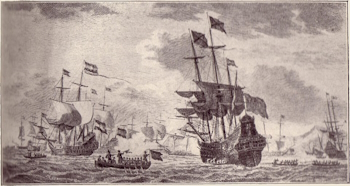 Treasure fleets consisting of a dozen or more ships used to sail from Cádiz or Seville in Spain, bringing European goods not readily available in the New World to the colonies with the aim of returning with gold, silver and other goods from Peru and Colombia, as well as spices and other items from south east Asia, brought across the Pacific by the Manila Galleon, which was then transported by mule train across the isthmus of Panama.…
Treasure fleets consisting of a dozen or more ships used to sail from Cádiz or Seville in Spain, bringing European goods not readily available in the New World to the colonies with the aim of returning with gold, silver and other goods from Peru and Colombia, as well as spices and other items from south east Asia, brought across the Pacific by the Manila Galleon, which was then transported by mule train across the isthmus of Panama.…

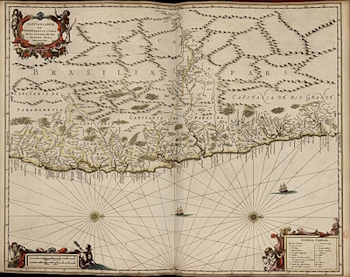 In the early 17th century an autonomous, self-sufficient community of escaped slaves (maroons) known as Palmares established itself in the Captaincy of Pernambuco in north-eastern Brazil. It grew considerably throughout the 17th century, eventually becoming the largest settlement ever founded by runaway slaves in Brazil. Most of the information about this community comes from Portuguese and Dutch colonists and many of the names of those involved are unknown. At its apex, the population of Palmares reached somewhere between 10,000 and 20,000. The Palmaristas constantly resisted Portuguese and Dutch attacks while at the same time carrying out their own raids on the colonists. In the 1500s nearly half of all those enslaved from Africa were transported to Brazil, which was governed by the Portuguese at the time. Their settlements, called mocambos or quilombos, were constructed in the land’s interior, although the later is a modern term. At its height in the 1660s, Quilombo of Palmares was a confederation with a central capital and associated fortified towns and villages.…
In the early 17th century an autonomous, self-sufficient community of escaped slaves (maroons) known as Palmares established itself in the Captaincy of Pernambuco in north-eastern Brazil. It grew considerably throughout the 17th century, eventually becoming the largest settlement ever founded by runaway slaves in Brazil. Most of the information about this community comes from Portuguese and Dutch colonists and many of the names of those involved are unknown. At its apex, the population of Palmares reached somewhere between 10,000 and 20,000. The Palmaristas constantly resisted Portuguese and Dutch attacks while at the same time carrying out their own raids on the colonists. In the 1500s nearly half of all those enslaved from Africa were transported to Brazil, which was governed by the Portuguese at the time. Their settlements, called mocambos or quilombos, were constructed in the land’s interior, although the later is a modern term. At its height in the 1660s, Quilombo of Palmares was a confederation with a central capital and associated fortified towns and villages.…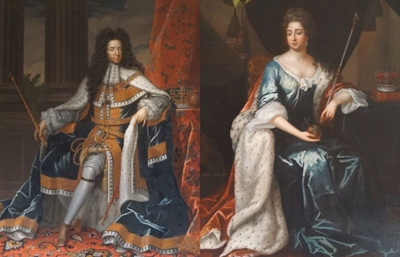 The ‘Glorious Revolution’, or de Glorieuze Overtocht in Dutch, is often called the Bloodless Revolution as there was very little bloodshed in England itself, although in Ireland it was a particularly bloody affair. Most ordinary people weren’t directly affected by the invasion as they had been during the Civil Wars (1642-52). In his book
The ‘Glorious Revolution’, or de Glorieuze Overtocht in Dutch, is often called the Bloodless Revolution as there was very little bloodshed in England itself, although in Ireland it was a particularly bloody affair. Most ordinary people weren’t directly affected by the invasion as they had been during the Civil Wars (1642-52). In his book 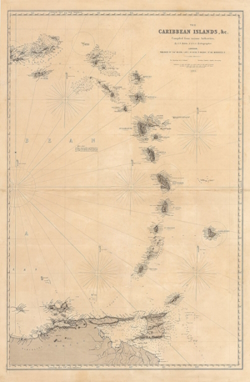 The name King William’s War was given to the American theatre of operations in the
The name King William’s War was given to the American theatre of operations in the